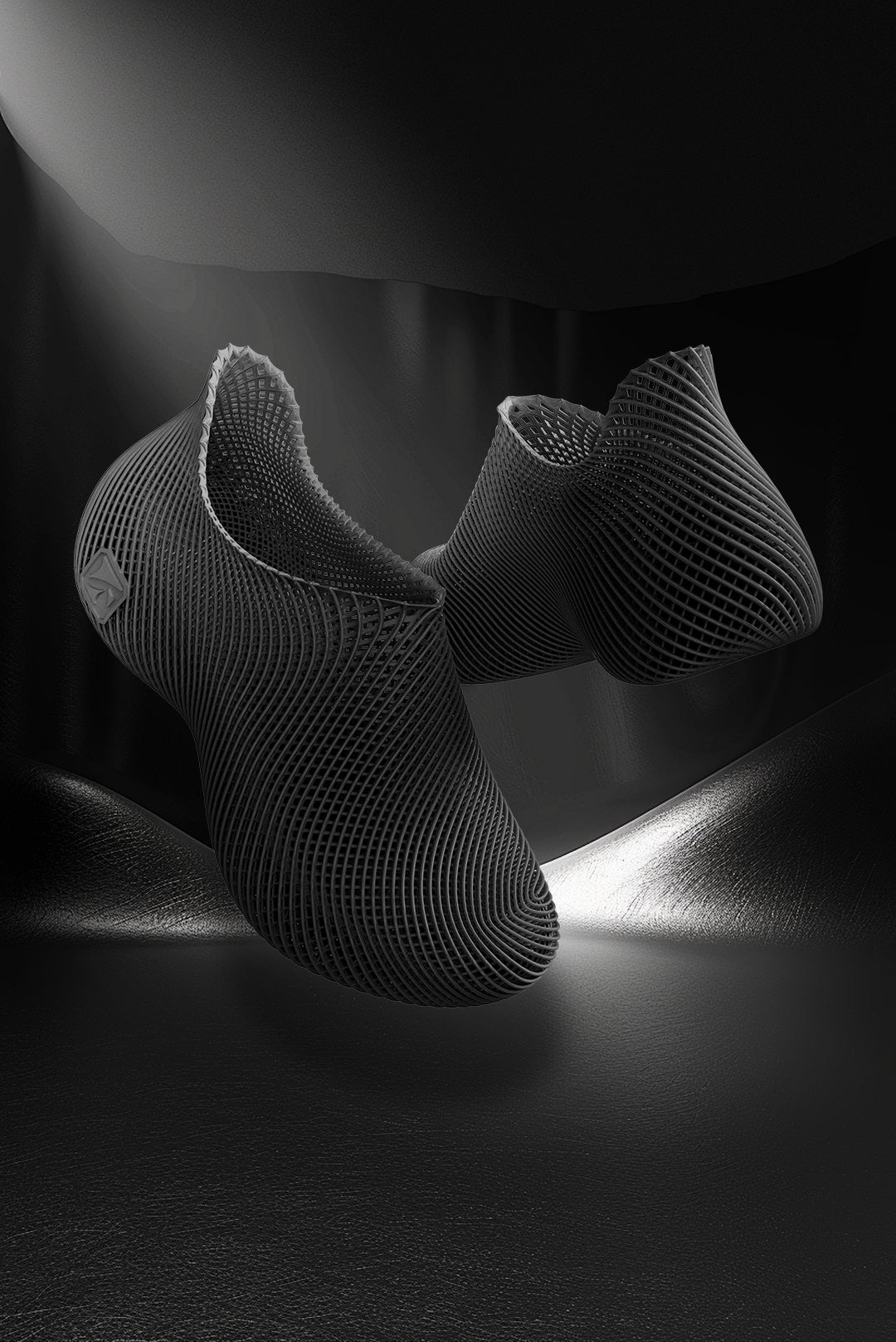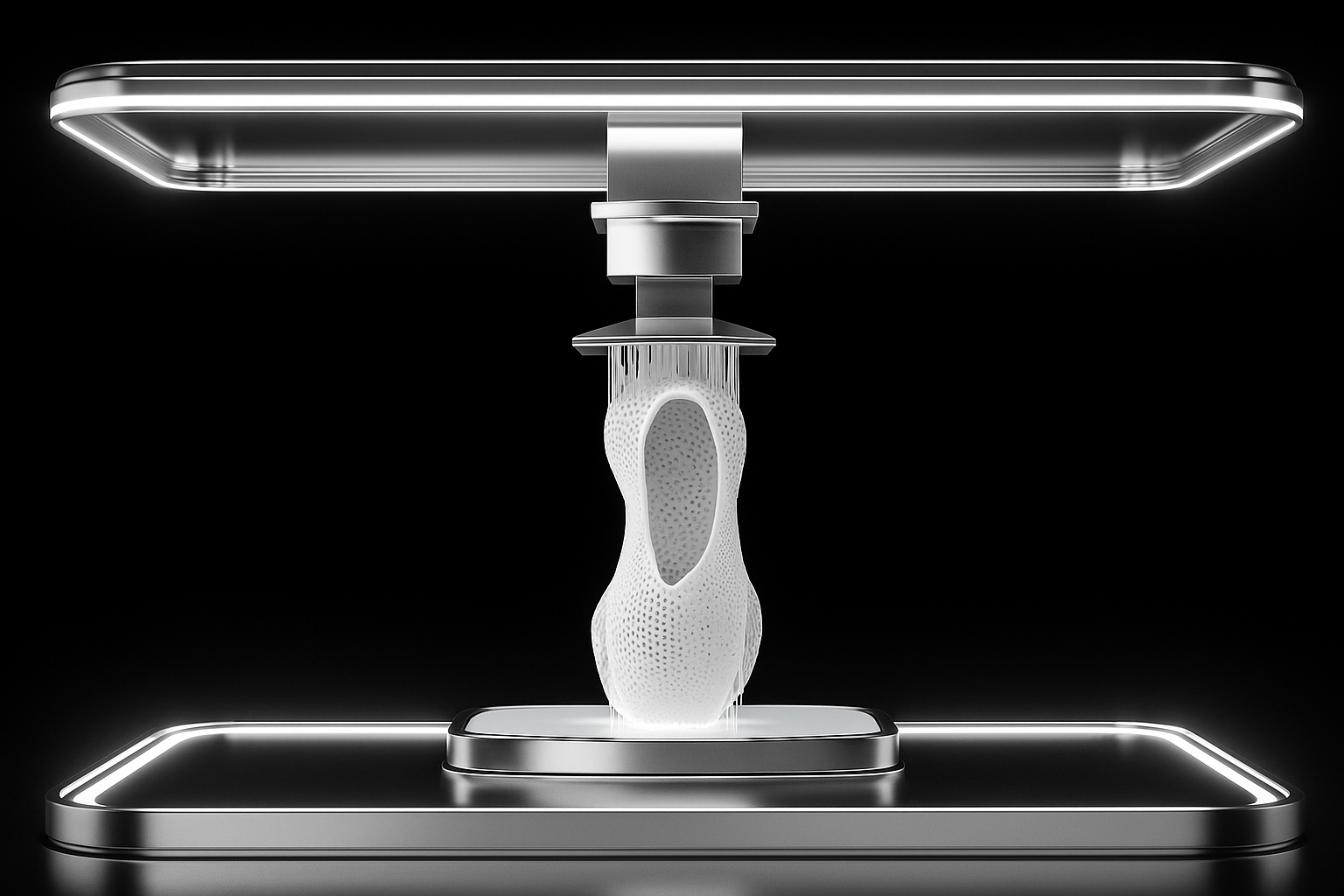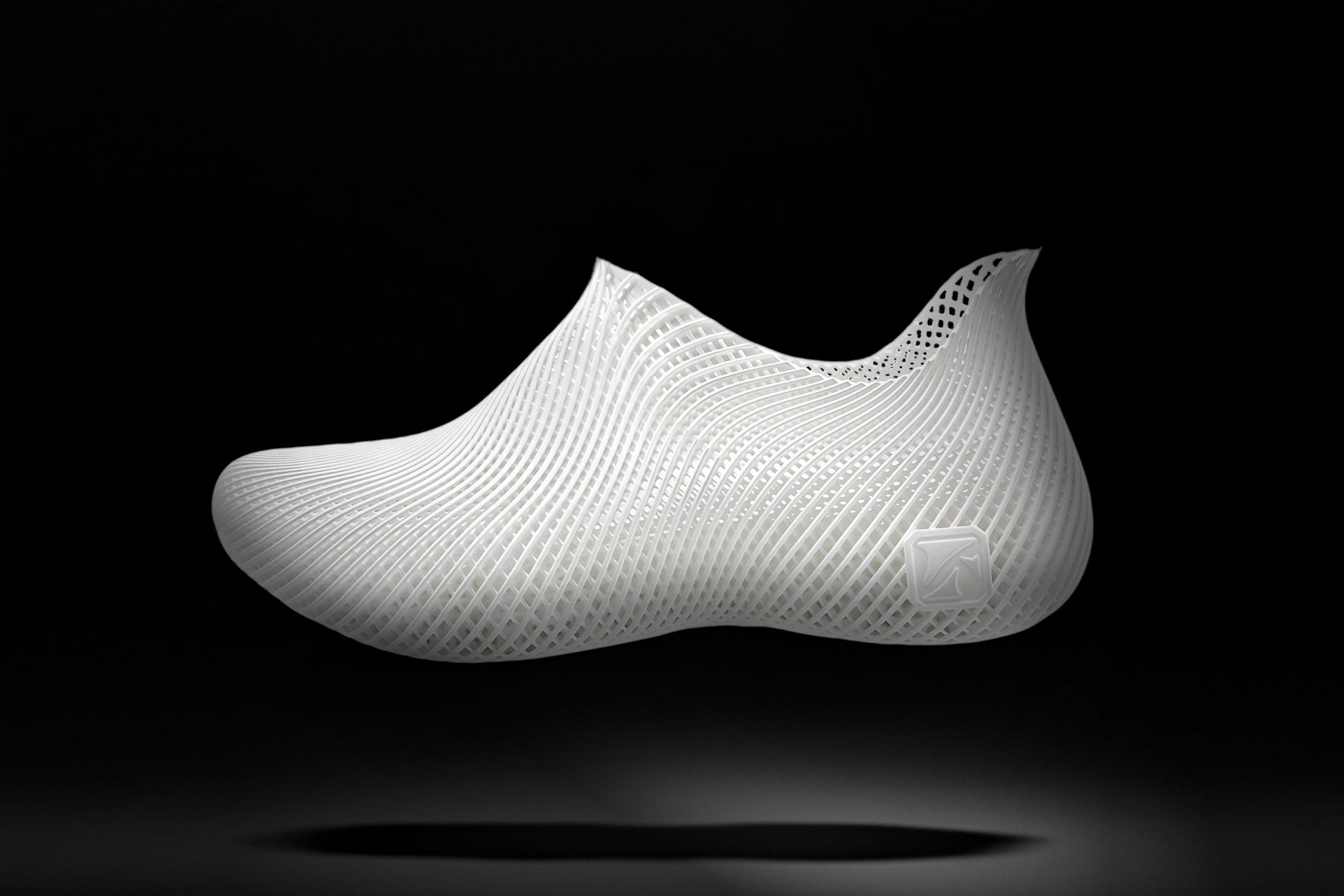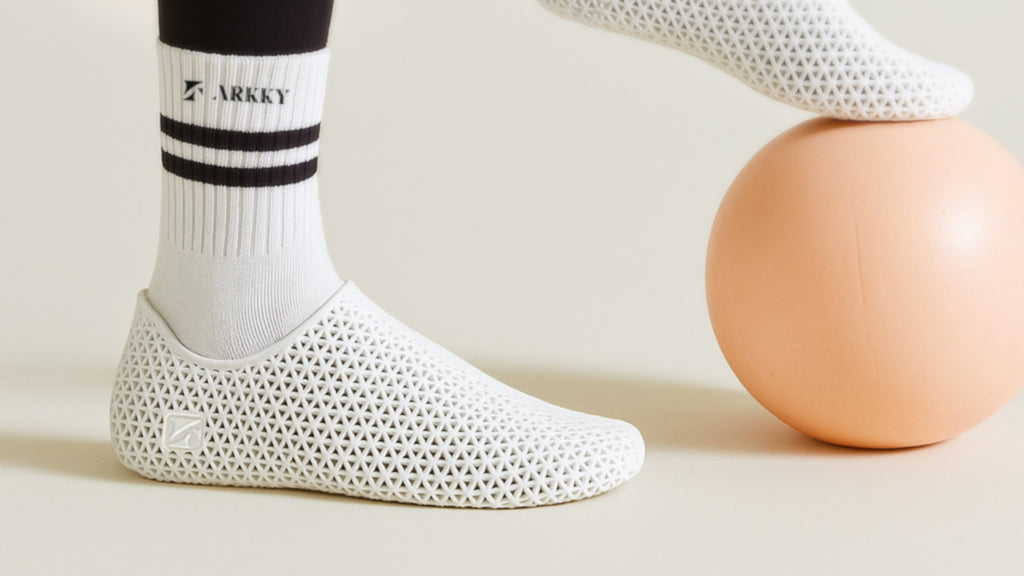El principio del calzado impreso en 3D se basa en tecnologías de fabricación aditiva (FA), que construyen objetos capa por capa a partir de modelos digitales. Este enfoque permite un diseño innovador, la personalización y la producción sostenible. A continuación, se detalla el proceso y sus ventajas.
Principios y tecnologías clave
Diseño digital
El proceso comienza con la creación de un modelo digital del zapato mediante software de Diseño Asistido por Computadora (CAD). Este modelo incorpora detalles intrincados como la estructura del zapato, elementos de diseño y aspectos funcionales como la amortiguación y el soporte.
Tecnologías de fabricación aditiva (FA)
- Fusión de lecho de polvo (PBF): Utiliza un láser o haz de electrones para fusionar partículas de polvo capa a capa. Produce piezas resistentes y de alta resolución, ideales para entresuelas y componentes estructurales.
- Polimerización en cuba: cura la resina líquida en piezas sólidas utilizando una fuente de luz; a menudo se utiliza para crear piezas detalladas y flexibles.
- Modelado por deposición fundida (FDM): extruye material termoplástico capa por capa, comúnmente aplicado en prototipos y piezas más simples.
- Inyección de material: Deposita gotas de material curado con luz UV. Este método permite la impresión multimaterial y a todo color.
Selección de materiales
- Poliuretano termoplástico (TPU): duradero, flexible y transpirable, ampliamente utilizado en entresuelas y partes superiores.
- Fotopolímeros: Se utilizan en la polimerización en cuba para crear componentes altamente detallados y flexibles.
- Polvos de nailon y poliamida: se aplican en procesos PBF para obtener piezas estructurales resistentes y duraderas.
Construcción capa por capa
La impresora 3D construye el zapato depositando o curando el material capa por capa según el modelo digital. Cada capa se une a la anterior, formando gradualmente la estructura completa del zapato.
Personalización y personalización
La impresión 3D permite un alto grado de personalización, lo que permite a los fabricantes diseñar zapatos adaptados a las formas de pie individuales, preferencias o requisitos especializados como soporte ortopédico.
Posprocesamiento
Tras la impresión, los zapatos se someten a procesos de posprocesamiento que incluyen limpieza, curado y acabado. Estos garantizan que el calzado cumpla con los estándares de durabilidad, comodidad y estética.
Ventajas de los zapatos impresos en 3D
- Personalización: Adaptado a las necesidades individuales para una mayor comodidad y rendimiento.
- Sostenibilidad: Reduce significativamente los residuos en comparación con la fabricación tradicional.
- Innovación: Permite diseños y estructuras complejas que son imposibles con las técnicas convencionales.
- Velocidad: Admite creación rápida de prototipos y ciclos de producción más rápidos, lo que reduce el tiempo de comercialización.
Conclusión
Los zapatos impresos en 3D combinan diseño digital avanzado con tecnologías de fabricación aditiva para ofrecer un calzado altamente personalizado, duradero e innovador. Al aplicar estos principios, las marcas de calzado pueden optimizar la producción, minimizar los residuos y ofrecer a los consumidores productos de última generación que combinan comodidad, estilo y sostenibilidad.







Compartir:
¿De qué materiales están hechos los zapatos impresos en 3D?
Historia del calzado impreso en 3D: del concepto a la generalización